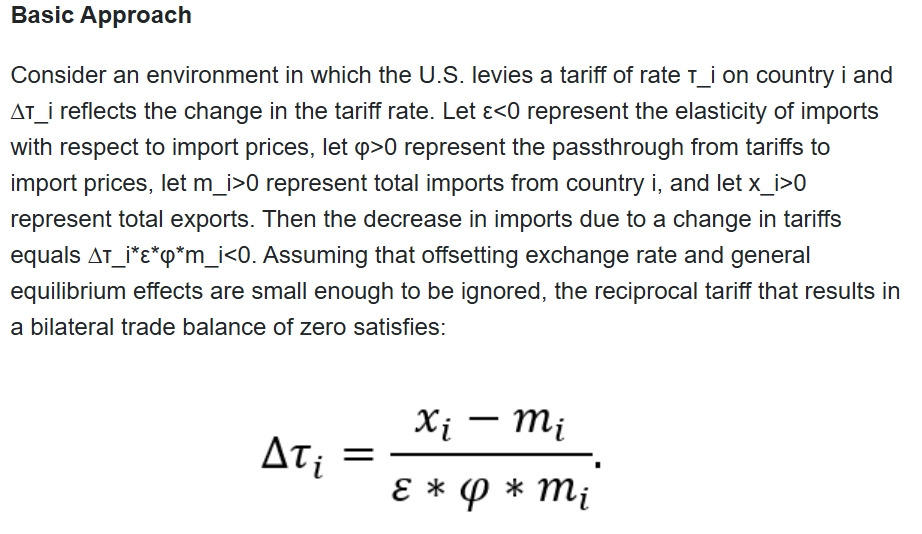
Starting June 1st, 2023 Our warehouse fee will be $0.65/cubic foot per month
In effort to lower the warehouse storage fee during inflation, we have went narrow aisle racking.This construction took us four months but the project is finally completed. With narrow aisle racking, we are able to drop storage by 24%.We as partners will go through this inflation together.
04/02/2025
The global trade landscape has entered a new phase of uncertainty following former U.S. President Donald Trump’s announcement of a 10% tariff on most imported goods into the United States. Additionally, significantly higher tariffs have been imposed on a wide range of products from key trading partners, including China, the European Union (EU), and Japan. The move has intensified global trade tensions, with affected nations preparing retaliatory measures that could impact global supply chains, inflation, and economic growth.
The White House's announcement, made against the serene backdrop of the Rose Garden, immediately sent shockwaves through global markets. As financial markets reacted, Japan’s Nikkei index dropped to an eight-month low, while stock futures in the U.S. and Europe also fell as investors sought safer assets like bonds and gold.
China, the world’s second-largest economy, now faces an additional 34% tariff on top of a previously imposed 20% duty. In response, Chinese officials have pledged countermeasures, despite warnings from U.S. Treasury Chief Scott Bessent that such actions could further escalate the situation. Japan and the EU, also impacted by 24% and 20% tariffs, respectively, have criticized the new measures, citing risks to long-standing trade relationships.
European Commission President Ursula von der Leyen described the tariffs as a significant threat to the global economy and warned that if diplomatic efforts fail, the EU is prepared to enact countermeasures.
“The consequences will be dire for millions of people around the globe,” she stated, underscoring the broader economic implications beyond just U.S. trade policy.
Trump justified the tariffs as a necessary response to trade barriers imposed on U.S. goods by foreign governments. He argued that these measures would revitalize domestic manufacturing and job creation. However, economists and trade analysts have warned that broad-based tariffs could slow global economic growth, increase the likelihood of a recession, and raise costs for American consumers.
The new tariffs add to existing 25% duties on steel and aluminum, as well as previous restrictions on Canadian and Mexican imports. However, political opposition to Trump’s aggressive trade policies is growing.
Shortly after the tariff announcement, the U.S. Senate voted 51-48 to repeal tariffs on Canadian goods, with several Republicans breaking ranks. The bill’s prospects in the Republican-controlled House of Representatives remain uncertain.
Trump’s top economic advisor, Stephen Miran, defended the tariffs, acknowledging short-term disruptions but asserting that, in the long run, they would benefit the U.S. economy.
Certain commodities—including copper, pharmaceuticals, semiconductors, lumber, gold, and energy—are exempt from the new tariff measures. Additionally, Trump signed an executive order ending the ‘de minimis’ exemption, which previously allowed low-value packages (under $800) from China and Hong Kong to enter the U.S. duty-free. This policy shift is aimed at curbing illicit shipments of fentanyl and other contraband but could also disrupt international e-commerce logistics.
The broader implications of Trump’s tariffs remain uncertain. While the administration insists that the new measures will protect domestic industries, critics argue that the move could destabilize global trade flows.
The tariffs have already caused disruptions in manufacturing supply chains, as businesses rush to import goods before additional price hikes take effect. In the automobile sector, for example, early tariff concerns have spurred an increase in vehicle sales, as consumers seek to purchase before costs rise.
According to the U.S. Trade Representative (USTR), reciprocal tariffs are based on factors such as export and import volumes, price fluctuations, and market demand shifts.
Former President Donald Trump announced tariffs ranging from 10% to 50% on over 180 trade partners, with Vietnam among those facing the highest rate at 46%. Shortly after the announcement, USTR published its tariff calculation model, which considers trade imbalances, price fluctuations, and regulatory barriers that disadvantage U.S. goods abroad. Data is sourced from the U.S. Census Bureau (2024).
Some economists have speculated about the formula used. Financial writer James Surowiecki suggested on social media that the tariff is calculated by dividing a country’s trade deficit with the U.S. by its exports to the U.S., then halving the result. For example, with Indonesia’s $17.9 billion trade deficit and $28 billion in exports to the U.S., the tariff would be 64%, aligning with Trump's tariff table.
Applying this method to Vietnam, with a $123.5 billion trade deficit and $136.6 billion in exports to the U.S., the tariff would be around 45%. The White House, however, stated that tariffs would be determined by the Council of Economic Advisers using conventional economic models, arguing that trade deficits result from unfair practices and "fraud."

From a logistics and supply chain perspective, these tariffs present significant challenges for global freight operations. The imposition of higher duties will likely increase costs for importers, prompting many businesses to reevaluate their sourcing strategies. Companies that rely on just-in-time inventory models may face additional risks due to supply chain disruptions and increased lead times as goods are rerouted to avoid higher tariffs.
Moreover, the end of the ‘de minimis’ exemption could lead to significant changes in cross-border e-commerce logistics, forcing online retailers to adjust their shipping strategies to remain competitive. Businesses engaged in freight forwarding, customs brokerage, and inventory management must closely monitor these evolving policies and develop adaptive strategies to minimize disruptions.
While the immediate impact of these trade measures is still unfolding, logistics professionals should prepare for heightened volatility in global trade flows. Navigating these challenges effectively will require strategic planning, cost-effective routing, and enhanced supply chain visibility.
This article has been edited to align with the readership and industry focus of Worldcraft Logistics.
SEO
Digital Marketing/SEO Specialist
Simon Mang is an SEO and Digital Marketing expert at Wordcraft Logistics. With many years of experience in the field of digital marketing, he has shaped and built strategies to effectively promote Wordcraft Logistics' online presence. With a deep understanding of the logistics industry, I have shared more than 500 specialized articles on many different topics.

Hot News
08/05/2024

Hot News
02/23/2023

Hot News
02/23/2023

Hot News
02/06/2023
Hot News
02/07/2023